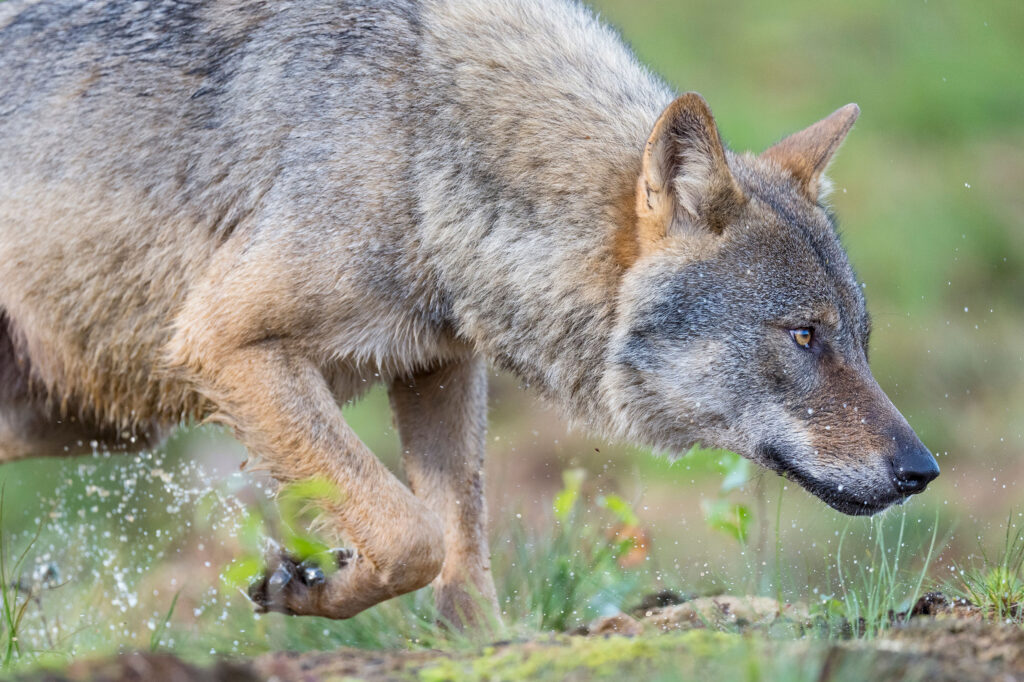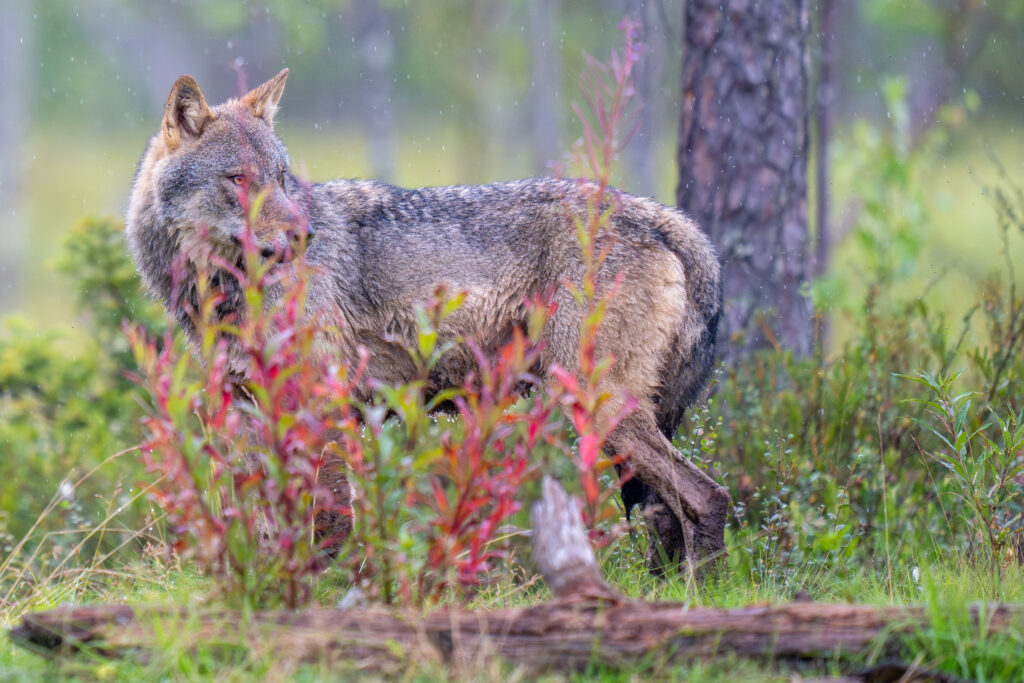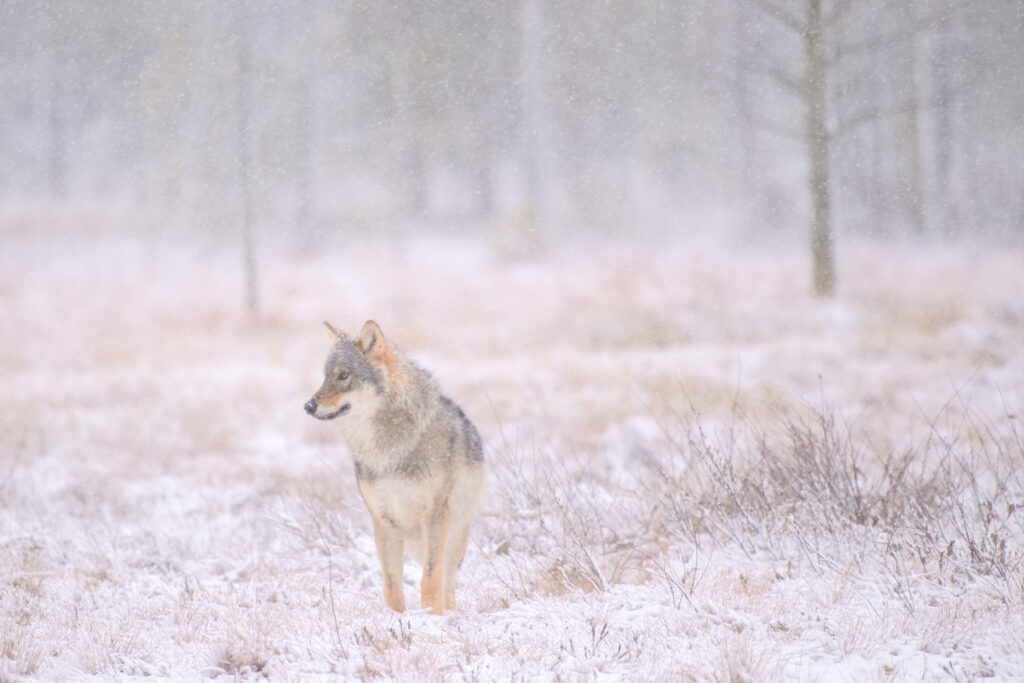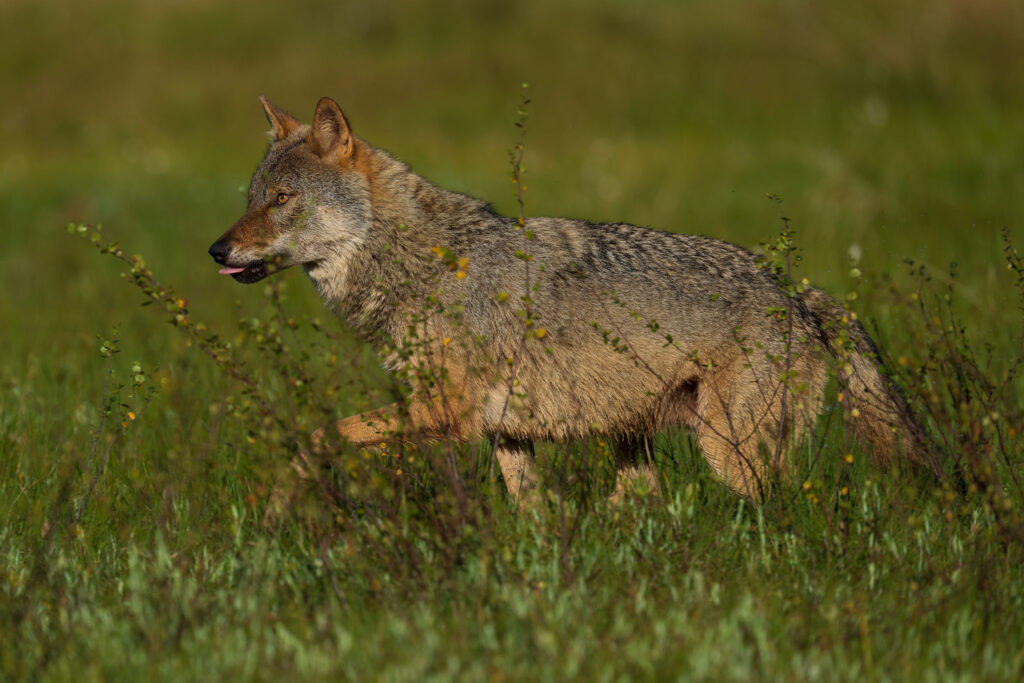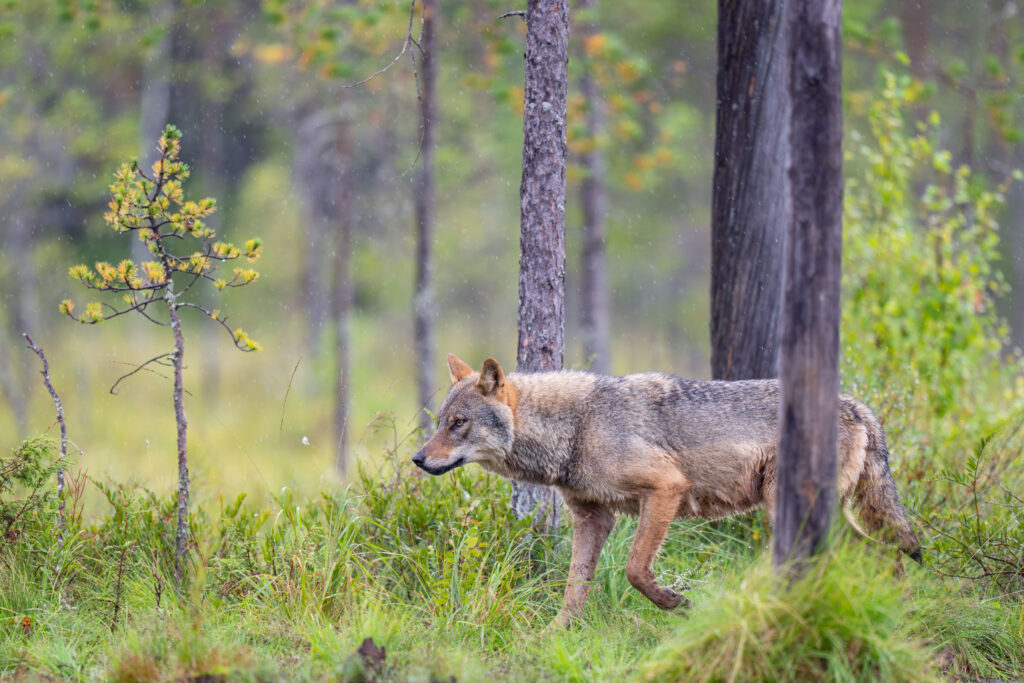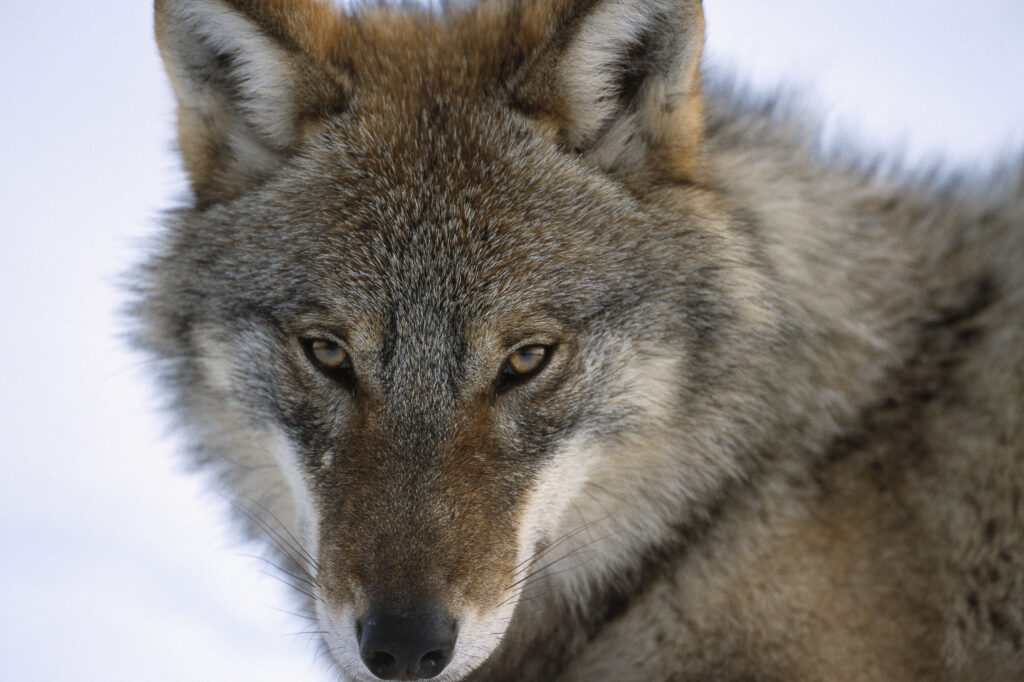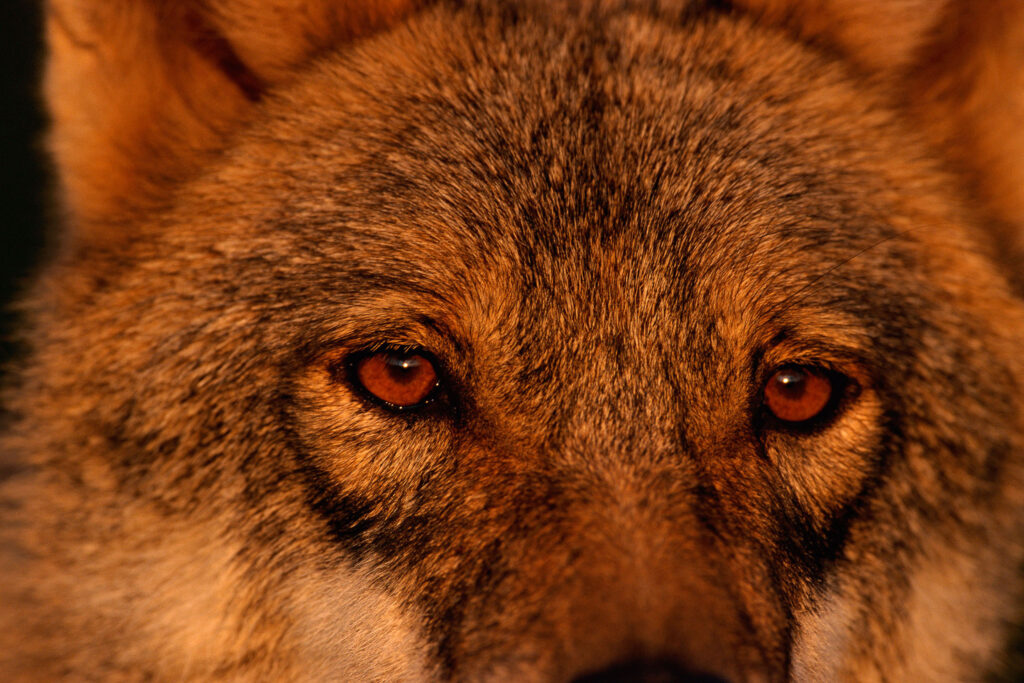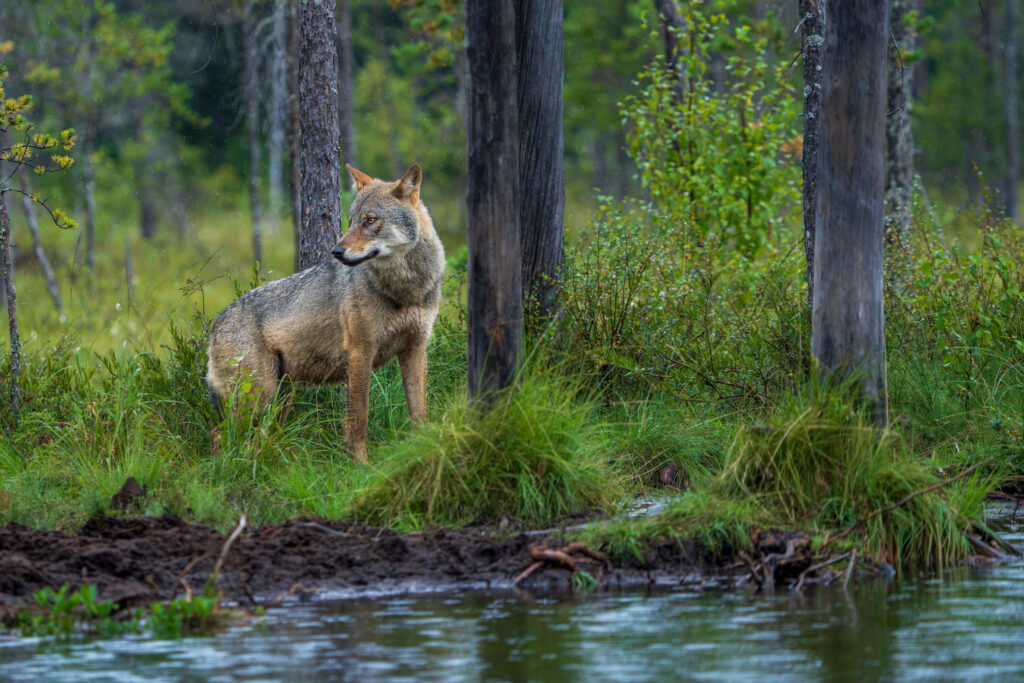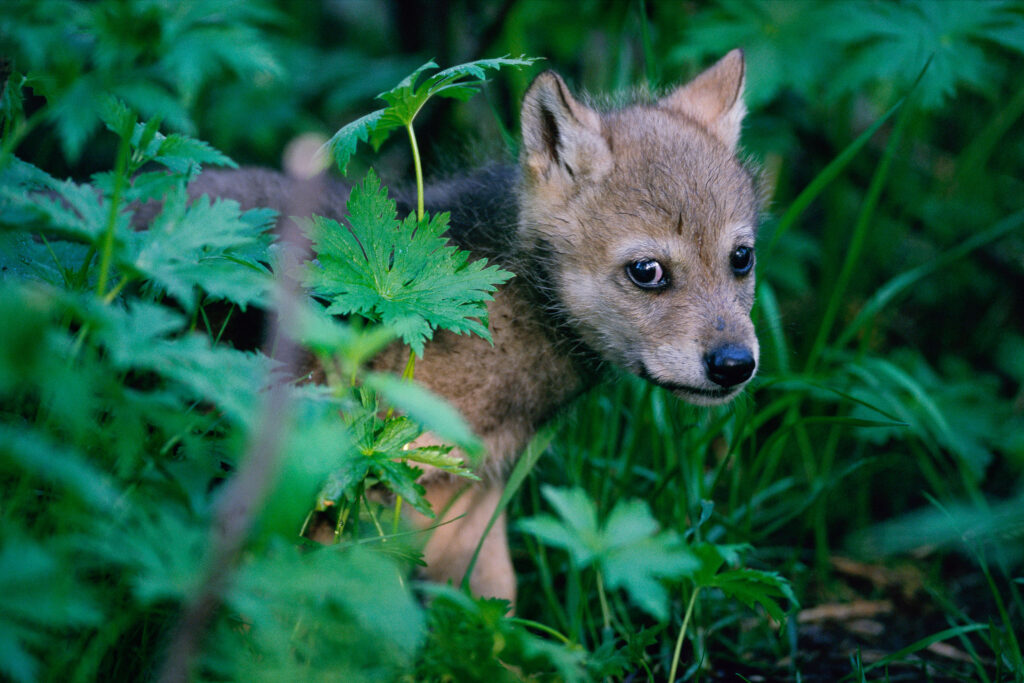Five entire wolf families, in total 30 wolves, are set to be killed. A licensed quota hunt of a “Strictly protected species”, which is not allowed according to EU law. Sweden’s yearly wolf hunt has been illegal ever since it first began, in 2010. No action has yet been taken by the EU Commission against Sweden about this hunt, in spite of a formal complaint filed about it, immediately the same year.
Aims to halve the wolf population
Sweden’s wolf population, officially 375 individuals by October 2023, dropped by almost 20 percent from the previous year, due to increased hunting pressure. The country’s government announced in October 2024 that it now intends to halve Sweden’s wolf population and that 170 wolves should become the new minimum level for “Favourable Conservation Status”, instead of the present minimum level at 300. Despite its own assigned scientific studies, which showed that having only 170 wolves will dramatically increase the biological risks as well as the cost for the taxpayer. This because of the many new active management actions that would be needed, due to the drastically reduced genetic base.
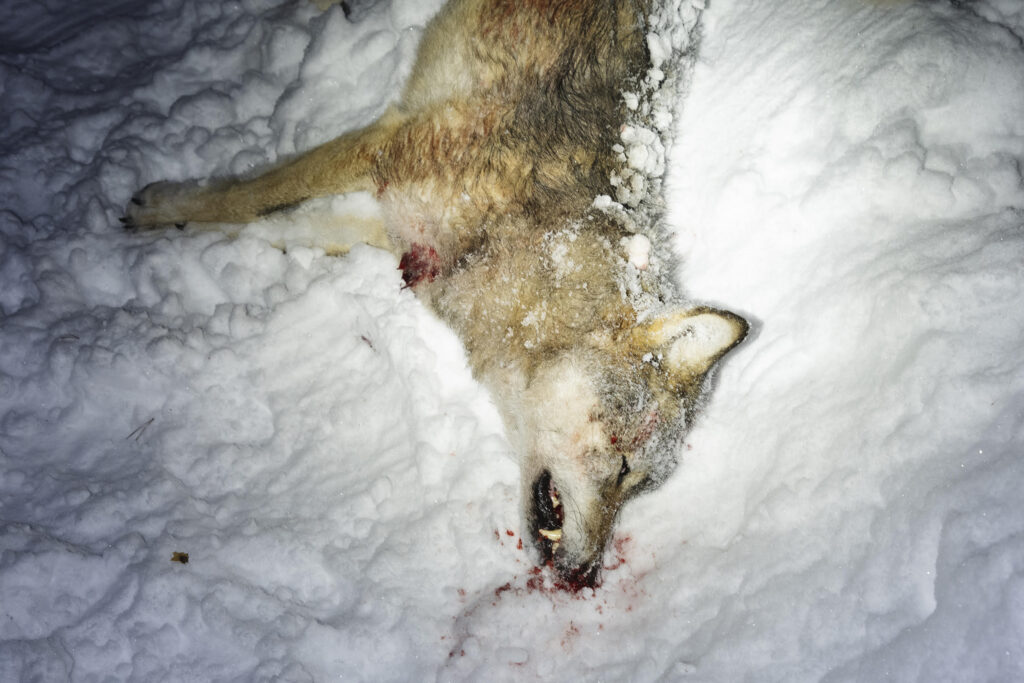
Anti-wildlife politics
Political winds in Sweden (and in parts of Europe) are right now unfavourable for the wolf, a species that has relatively recently come back from close to extinction in many countries. Sweden had no breeding wolf population from 1966 until 1983. The wolf is listed here as “Endangered” on the IUCN Red List. On December 3, 2024, the Standing Committee of the Bern Convention voted to downgrade the wolf’s protection status in Europe from ‘Strictly protected’ to ‘Protected’. A change to enter into force on March 7, 2025. The EU Commission will then be able to adapt corresponding annexes to the Habitats Directive, if the member states agree. That change will give “additional flexibility” to Member States to push down many wolf populations. At the same time, since the wolf remains a “Protected” species, Member States still need to achieve and maintain what is called “Favourable Conservation Status” for the wolf population in each EU country. More than 300 organizations and several hundred thousand people have expressed their criticism of this protection status downgrade.
A victim of misinformation and prejudice?
“We are very critical to the path that the EU is now taking, downgrading the protection status of the wolf”, says Magnus Orrebrant, Chairman of the Swedish Carnivore Association, “If the EU follows up the latest Bern Convention decision by changing the wolf’s protection status in the Habitat Directive, the result will be very negative not only for the wolves, but for all wildlife in Europe. In Sweden, it will have no immediate impact on the wolf population, since the Swedish government since 2010 has been blatantly disregarding the wolf’s special protection status, allowing a yearly licensed quota hunt and thereby breaking EU law. We filed a formal complaint to the EU Commission, leading to an infringement procedure against Sweden, as yet to no avail.
“The wolf is unfortunately the latest political pawn, a victim of misinformation,” commented Léa Badoz, Wildlife Programme Officer at Eurogroup for Animals. “Downgrading protection will not solve the challenges of coexistence, nor help farmers.”
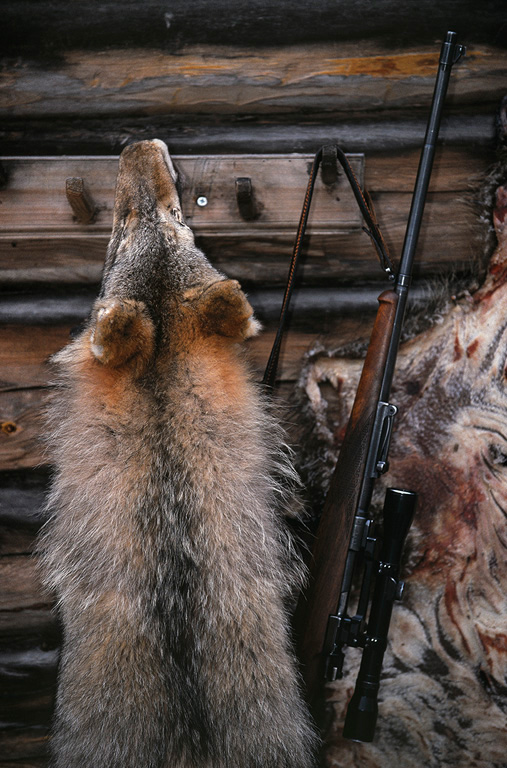
Quota hunting does not solve livestock predation issues
A scientific study from 2016, titled “Why do wolves eat livestock?” concluded that:
“The presence of stable packs, instead of dispersing wolves, the adoption of prevention measures on pastures, roe deer abundance, and the percentage of deciduous woods, reduced predation on livestock. Thus, we suggest promoting wild ungulate expansion, the use of prevention tools in pastures, and supporting wolf pack establishment, avoiding lethal control and poaching, to mitigate conflicts between wolf conservation and husbandry.”
“Culling is said to be a way to reduce wolf attacks on livestock, but there are better methods.”, says Benny Gäfvert, Carnivore expert at WWF Sweden, ”the EU Commission’s own in-depth analysis failed to find any evidence that culling wolves reduces attacks on livestock. Rather, research has shown that the risk of attacks on livestock increases when wolves are killed so that wolf packs break up. Then young wolves are forced to find food on their own and they are then more likely to attack livestock. Focus should be on strengthening and developing preventive measures that enable long-term sustainable coexistence between humans and predators.”
A key top predator
The wolf is a part of Sweden’s and Europe’s, natural heritage. As a top predator it has a key role in the continent’s natural ecosystems, ever since the Ice age, influencing the behaviour, number and genetical quality of their prey species. In Sweden, wolves primarily feed on moose, but they don’t mind eating roe deer, red deer, fallow deer, reindeer, beaver, hare, wild boar, rodents or carrion.
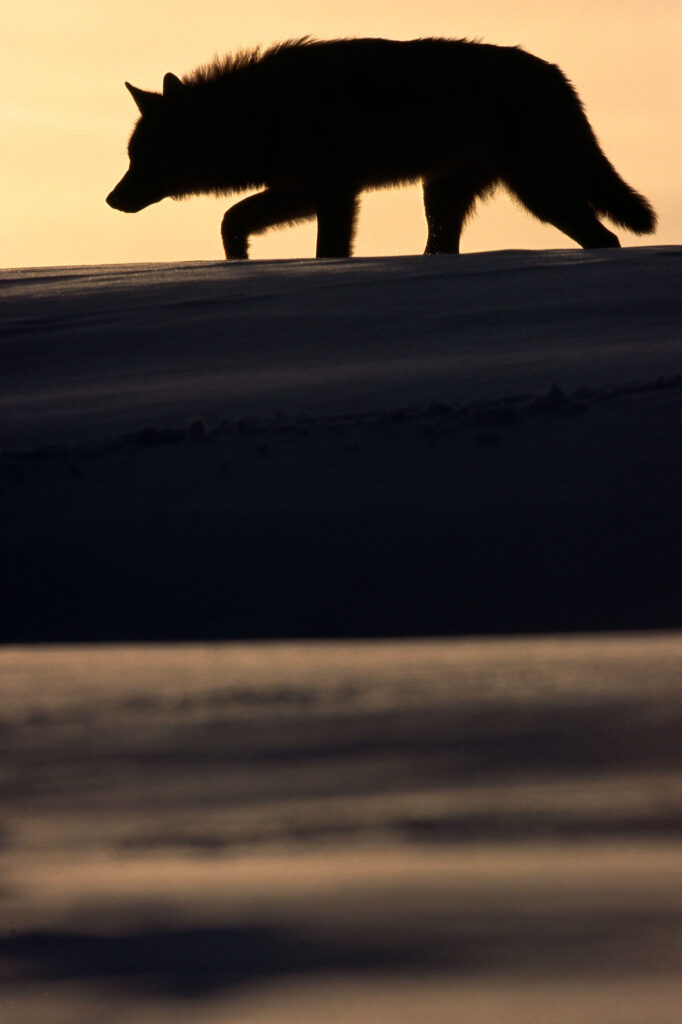
Links
- The situation of the wolf (Canis lupus) in the European union (English)
- Why do wolves eat livestock? (English)
- Shock message from the Swedish government: “Sweden can halve its wolf population” (Swedish)
- Wolf facts (English)
- Carnivores as moneymakers (English)
- Swedes like their large carnivores (English)
- Europe’s Environmental Bad boy (English)
- Domestic animal losses and other damage by wildlife 2022 (Swedish University of Agricultural Sciences, SLU, 2021 (Swedish)
- Official wolf statistics (Swedish)
- How to reduce wolf predation on cattle? (Swedish)
Images and videos here can be downloaded straight from our website. Their usage is provided at a complimentary basis, as long as it is connected to story telling about these issues and that you publish a byline with the Photographers name/Swedensbigfive.org
